Species has two main markets
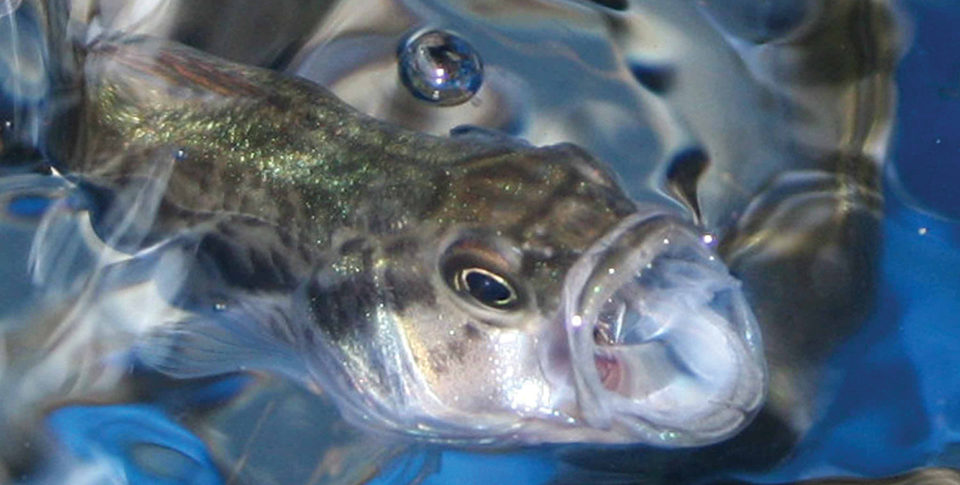
The largemouth bass, Micropterus salmoides, is the largest member of the North American family of Centrarchidae, collectively known as sunfish. Because of its popularity as both a sport and food fish, the bass has also been transplanted across North, Central and South America, and Asia.
In the United States, the competing demand for largemouth bass in sport fish stocking and the live food fish industry continues to maintain relatively high wholesale prices of $6-10/kg. While actual demand is poorly documented, it is estimated that as much as 100 metric tons (MT) of 400- to 700-gram market-size largemouth bass are produced annually in the United States for sale as live fish in urban Asian markets, where they are highly regarded.
Spawning
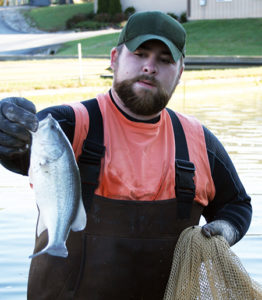
Largemouth bass are normally spawned in ponds, where they do not require hormone injection or photoperiod manipulation. Broodfish are usually 2 to 4 years old and at least 0.5 kg in size. Larger fish can be harder to handle and less dependable as spawners.
Sexing of broodfish is most easily done in the spring, when females have large, distended abdomens, and males emit milt when hand stripped. Male and female broodfish are often held in separate ponds to prevent early spawning, should water temperatures rise prematurely. Broodfish are placed in spawning ponds at 50 to 100 pairs/ha when pond water temperatures stabilize above 16 degrees-C.
Nesting sites should be prepared with gravel boxes or commercial artificial spawning substrates placed 3 to 6 meters apart at water depths of 0.5 to 1.0 meter, close to the pond bank to allow ease of observation. Spawning ponds are managed for water clarity, as it is important to observe fry activity.
Largemouth bass are multiple spawners – only a portion of the eggs from a female are ready to be released at one time. The male will select and guard a nest that can contain eggs contributed by several females. Once the eggs begin to hatch, the male will guard the fry and not continue spawning activity until the fry have left the nest site. Some producers stock more males than females to ensure the availability of nest sites.
Fingerling production, rearing
Depending on water temperature, it normally takes a few days to a week for eggs to hatch and a similar amount of time for the fry to swim up. For several days following swimup, bass fry remain near the nest, where they can be collected with an 800-µm seine. Fry are then transferred to nursery ponds and stocked at 100,000-200,000 per hectare, There they feed on zooplankton for four to six weeks. Preparation (fertilization) of nursery ponds should begin as soon as spawning begins. It is generally accepted that largemouth bass fry do not readily accept prepared diets.
When fingerlings attain weights of 1 to 2 grams and lengths greater than 4 cm, they are ready for feed training. At this size, the juveniles are stocked in tanks at high densities and presented highly palatable food items such as freeze-dried krill at frequent intervals. Over the period of 10-14 days the juveniles are gradually transitioned to 100 percent dry diet. Size grading of fingerlings to a uniform size is important, both prior to and after feed training, as cannibalism can greatly affect survival.
Feeding advances, growth
Development of technologies for intensive fry production such as controlled indoor egg incubation and fry-feeding protocols could potentially improve the reliability of bass fingerling production and reduce production costs. Recent research at Kentucky State University in Kentucky, USA, developed a protocol for raising bass entirely indoors (eliminating nursery ponds) and habituating largemouth bass fry to dry diets at smaller sizes.
The protocol included initially feeding fry live artemia nauplii, transitioning them to decapsulated artemia cysts and finally feeding a commercial fry starter. This process yielded successful feed training in about 70 percent of the bass and 70 percent survival. Fingerlings as small as 0.5 grams accepted the commercial diet components.
After two weeks actively on feed, fingerlings are stocked into ponds at 50,000 to 60,000/ha for first-year growth. Some producers stock feed-trained fingerlings in small ponds at densities of over 200,000/ha for a few weeks to ensure they actively take the feed.
Once acclimated to the feed, the bass typically receive floating salmonid diets containing 40 to 45 percent protein and 8 to 16 percent fat once or twice daily to apparent satiation. The best time to feed appears to be early morning and/or late afternoon, as bright sunlight may to reduce feeding activity.
After approximately four months, bass fingerlings should attain a length of 15 to 25 cm and weigh over 100 g. Fish of this size are either marketed for pond stocking or restocked at densities of 7,000 to 11,000/ha for second-year growth. At the end of their second year, largemouth bass should attain 500 to 600 grams, when they can be marketed as live food fish in ethnic Asian markets, although smaller individuals can be marketed for corrective restocking of private sport fish ponds or used in managed trophy fisheries. Beyond the age of 2 years, the growth of largemouth bass slows substantially.
Nutrition components
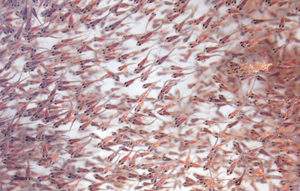
Nutritional research on largemouth bass has been limited. Most producers currently feed commercial floating trout and salmon diets based primarily on ready availability. For optimal growth, the protein requirement for largemouth bass has been determined to be 40 percent or greater, and their lipid requirement is 5 percent or greater.
Carbohydrate levels of 20 percent or less appear beneficial, while higher levels may result in reduced growth and poor liver condition, possibly due to glycogen accumulation. However, carbohydrate levels over 20 percent are generally required to achieve proper flotation in extruded diets. Current research is evaluating the use of slow-sinking diets, which if acceptable would allow reduction of the carbohydrate content in diets for bass.
Recent research at Kentucky State University has demonstrated that marine fishmeal and fish oil can be completely replaced with less-expensive plant and animal protein and lipid sources in diets for largemouth bass without growth reduction. Of the protein sources evaluated, poultry byproduct meal and soybean meal appeared to have the best potential for replacement of fishmeal.
Experiments evaluating different sources and amounts of lipid suggested that largemouth bass do not require fish oil and perform well on a broad range of lipid sources. Further determination of the essential amino acid requirements for lysine and methionine, and digestibility values for common diet ingredients would allow the formulation of diets specifically designed for largemouth bass.
Perspectives
The future growth of the largemouth bass industry is dependent on many factors, including feed costs, fingerling availability and costs, and of course marketing. Currently, virtually all largemouth bass are niche-marketed and sold live to either sport fish markets or live food fish markets. Specialized live-fish markets catering to ethnic populations exist in large urban areas on the east and west coasts of the United States and in some regions of Canada, where Asian consumers appear to prefer live largemouth bass over most other freshwater fish.
A major marketing consideration is the fact that, in many U.S. states, game or sport fish such as largemouth bass cannot be grown and/or sold as food. The laws vary state to state, and anyone interested in producing, transporting or selling largemouth bass as food fish in the United States should thoroughly research state and even federal regulations. Also, producers should be open-minded about raising fish for the sport fish-stocking industry, which represents a major market sector for largemouth bass.
(Editor’s Note: This article was originally published in the September/October 2008 print edition of the Global Aquaculture Advocate.)
Now that you've reached the end of the article ...
… please consider supporting GSA’s mission to advance responsible seafood practices through education, advocacy and third-party assurances. The Advocate aims to document the evolution of responsible seafood practices and share the expansive knowledge of our vast network of contributors.
By becoming a Global Seafood Alliance member, you’re ensuring that all of the pre-competitive work we do through member benefits, resources and events can continue. Individual membership costs just $50 a year.
Not a GSA member? Join us.
Authors
-
Shawn Coyle
Aquaculture Research Center
103 Athletics Road
Kentucky State University
Frankfort, Kentucky 40601 USA -
Nathan Cochran
Aquaculture Research Center
103 Athletics Road
Kentucky State University
Frankfort, Kentucky 40601 USA -
James H. Tidwell, Ph.D.
Aquaculture Research Center
103 Athletics Road
Kentucky State University
Frankfort, Kentucky 40601 USA
Tagged With
Related Posts

Aquafeeds
A look at phospholipids in aquafeeds
Phospholipids are the major constituents of cell membranes and are vital to the normal function of every cell and organ. The inclusion of phospholipids in aquafeeds ensures increased growth, better survival and stress resistance, and prevention of skeletal deformities of larval and juvenile stages of fish and shellfish species.
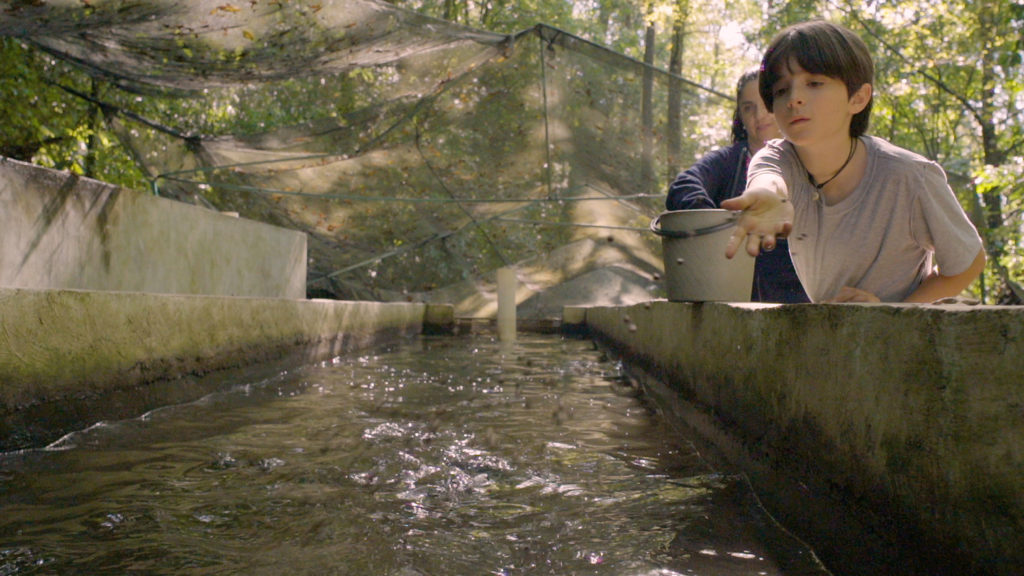
Intelligence
A motive, and a market, for farmed fish in Mexico
Boasting ample areas for aquaculture and a robust domestic demand for seafood – not to mention its close proximity to the U.S. market – a land of opportunity lies in Mexico. Fish farming is primed to meet its potential south of the border.
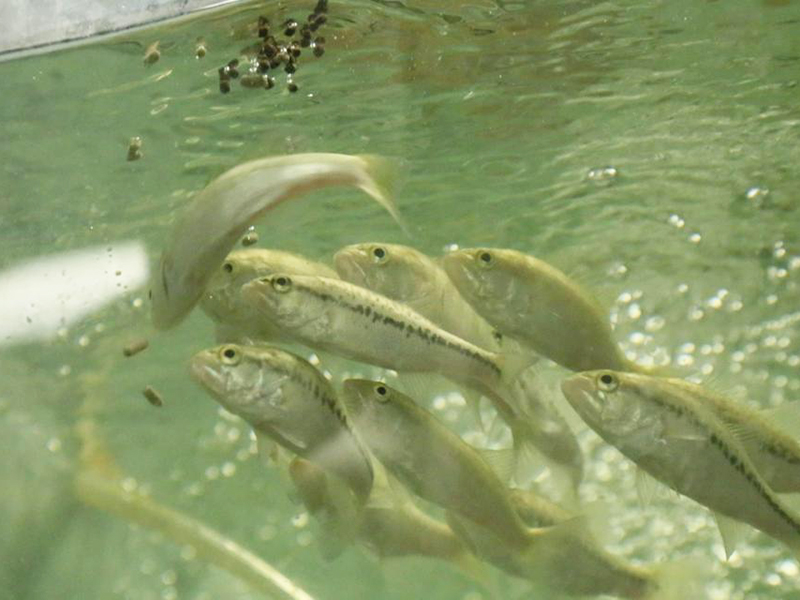
Aquafeeds
Largemouth bass responses to supplemental EPA, DHA
This 10-week feeding trial aimed at complementing existing information on largemouth bass responses to oils with supplemental EPA and DHA. Dietary supplementation of these essential fatty acids may be required in feeds for this species.
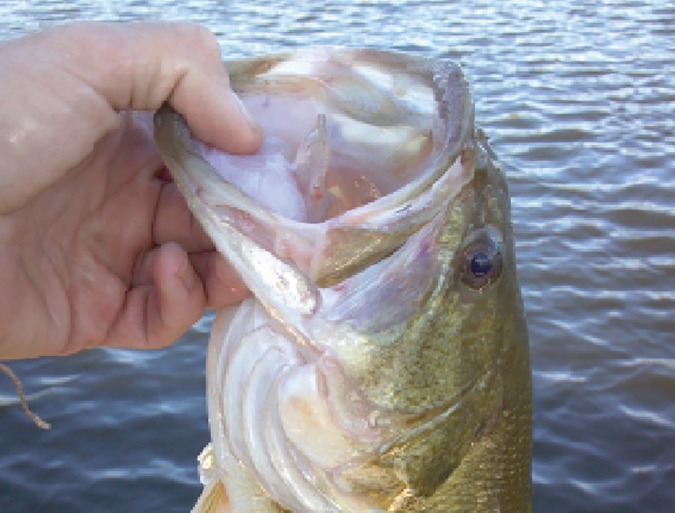
Health & Welfare
Biomass density affects bass production
The production period for largemouth bass in ponds hampers the economic feasibility of pond culture in the United States. A study demonstrated that bass fingerlings could be raised at high densities in a semi-closed recirculating system without serious mortality, size variability or growth retardation.



